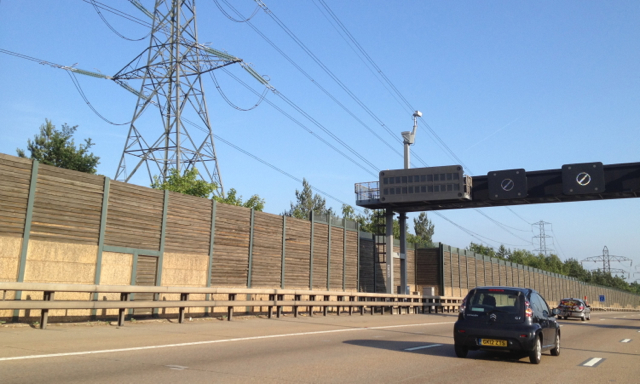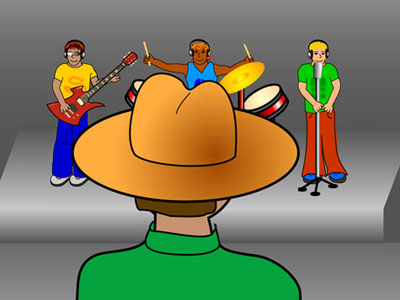At high frequency, when the wavelength is small compared to the object size, then the sound does not diffract very effectively. In acoustics, we use the term shadow zone to describe the area behind the object. Because if you stand there you are in an acoustic shadow (just like the optical shadows we see) and the sound is quieter.
Acoustic shadow zones are exploited by acoustical engineers to reduce noise. Noise barriers alongside roads reduce the traffic sound for houses in the shadow zone. But low frequencies are less attenuated by the barriers because they can diffract (bend) over the top. Look out for heavily-built fences along the side of motorways – these are noise barriers.

Case study: an unusual noise barrier
One of my favourite projects was for the developer of luxury holiday villas in the hills just outside Paphos, Cyprus. The developer was worried about the noise from a road. One mitigation measure I proposed was to use the villa’s own infinity swimming pool to screen the traffic sound, acting like a noise barrier.
Acoustic Consultant, Vicky Stewart
![]() Career case study: Why Vicky chose to study acoustical engineering
Career case study: Why Vicky chose to study acoustical engineering
A really good example of diffraction can be seen with another type of wave barrier – a harbour or dock wall. If you live near the sea, have a look at waves on a windy day hitting a harbour wall. Some of the energy will reflect, but at the end of the barrier (near the opening of the harbour) the waves will bend around and come inside. If the water inside the harbour stayed dead calm, then somewhere near the harbour mouth you would see completely flat water immediately next to big waves. This can’t happen, some of the waves must get into the flat water. This is another way of picturing the bending that diffraction describes.

Going back to acoustics, you’ll want to avoid this shadowing effect when you go to see a band or orchestra play. If you’re behind someone tall, then not only do you not get to see the musicians, you also get less direct sound from the stage because it has to diffract around the tall person’s head. Seats in a theatre or stadium are on a slope so you can see and hear well.
Light waves have a very small wavelength (typically 500 nm, although of course it changes with colour) and diffract noticeably in everyday life. We can set up specialised experiments in the lab to demonstrate light diffraction, but if you’re in the shadows on a sunny day, diffraction around the obstruction to the direct sunlight is not going to get you a tan. We’ve been using sound as an example since it has a much longer wavelength (from a few centimetres to a few metres depending on the frequency) and so objects such as the edges of walls will cause diffraction and enable sound to travel round corners.